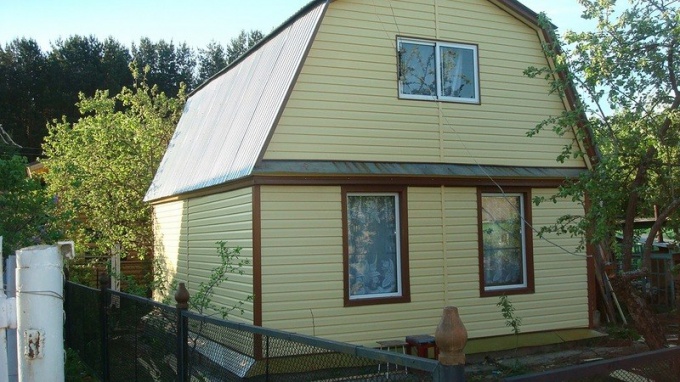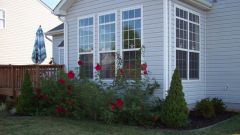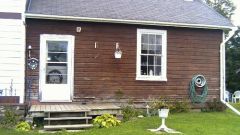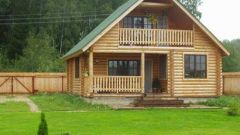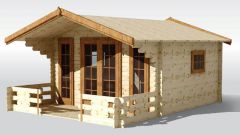The need for external furnish of a country house occurs in two cases: if its appearance does not suit the owners and when required to protect the walls from the adverse effects of the environment. For these purposes, choose facade materials. If the house have sheathing from the inside, not outside, you can use drywall, moisture resistant plywood with a minimum thickness of 5 mm, OSB.
One of the most suitable in price and quality of finishing materials is vinyl siding. For sale is a large selection of these panels with a different color scheme. This facade will look presentable and will retain a fresh appearance for many years. For vinyl siding does not require special care it does not crack from frost and will not lose its color when exposed to sunlight. Mount the panel on a pre-lined up along the walls of a frame of wooden bars or metal sheets, which is used in the works with drywall.
In addition to siding, cottages often sheathe clapboard. But for exterior wood should be pre-processed antiseptic composition, which will give it a water-repellent property. This is to ensure that the lining for decades to maintain its integrity and not collapse under the influence of moisture, mold or rot. For the best wood protection it is recommended to cover in 2-3 layers of varnish or paint.
A summer house can be clad with plastic panels, which, despite its apparent fragility, is able perfectly to last for many years protecting the wall from moisture. Another suitable for this purpose material – corrugated sheet. There is a special category of these metallic leaves – wall. They are designed for external protection of various buildings. Another finish – painted panel swaps. If they are in a certain order to consolidate the polished wooden bars, it will be an interesting finish in the style of framing.
If the country houseIR is planned to operate in the cold season, it is wiser to choose the siding or decking. They will be able to protect interior spaces from penetration of wind. In addition, the skeleton on which are mounted these materials provides an opportunity to insulate the walls. To do this, in the spaces between the vertical posts laid material with low thermal conductivity: mineral and basalt wool, polystyrene foam.
Materials for external furnish of the country house
One of the most suitable in price and quality of finishing materials is vinyl siding. For sale is a large selection of these panels with a different color scheme. This facade will look presentable and will retain a fresh appearance for many years. For vinyl siding does not require special care it does not crack from frost and will not lose its color when exposed to sunlight. Mount the panel on a pre-lined up along the walls of a frame of wooden bars or metal sheets, which is used in the works with drywall.
In addition to siding, cottages often sheathe clapboard. But for exterior wood should be pre-processed antiseptic composition, which will give it a water-repellent property. This is to ensure that the lining for decades to maintain its integrity and not collapse under the influence of moisture, mold or rot. For the best wood protection it is recommended to cover in 2-3 layers of varnish or paint.
A summer house can be clad with plastic panels, which, despite its apparent fragility, is able perfectly to last for many years protecting the wall from moisture. Another suitable for this purpose material – corrugated sheet. There is a special category of these metallic leaves – wall. They are designed for external protection of various buildings. Another finish – painted panel swaps. If they are in a certain order to consolidate the polished wooden bars, it will be an interesting finish in the style of framing.
What the facade material is better?
If the country houseIR is planned to operate in the cold season, it is wiser to choose the siding or decking. They will be able to protect interior spaces from penetration of wind. In addition, the skeleton on which are mounted these materials provides an opportunity to insulate the walls. To do this, in the spaces between the vertical posts laid material with low thermal conductivity: mineral and basalt wool, polystyrene foam.
